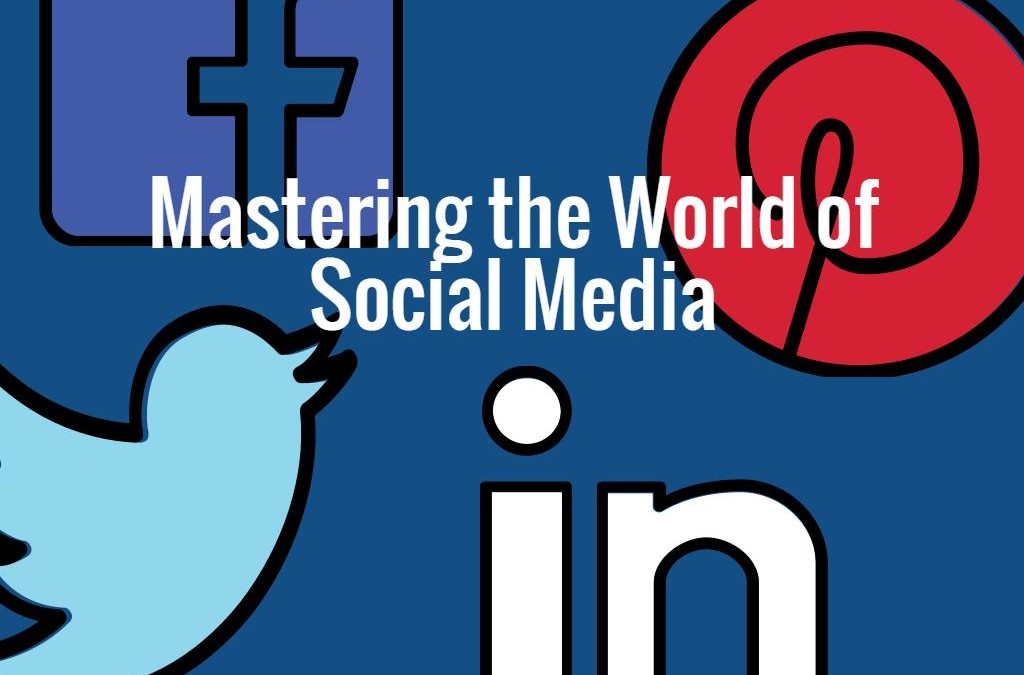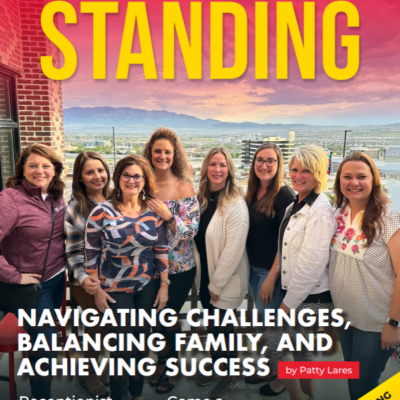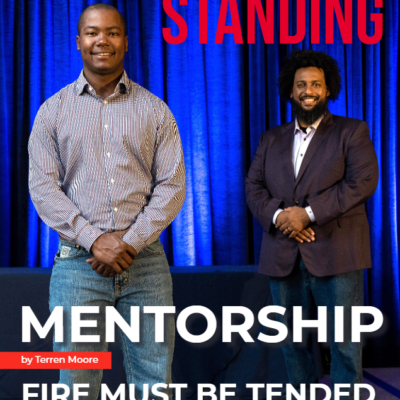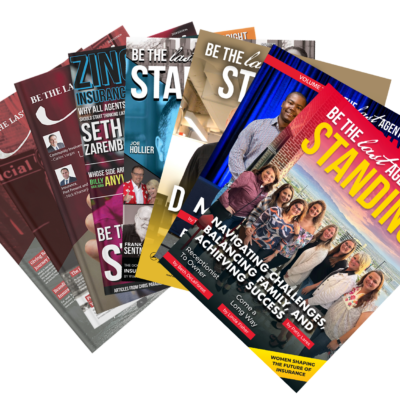Social media is all about connecting with others, building relationships, and networking with professionals. Unfortunately, the art of social networking correctly is one that’s learned through experience. While you’re handling your insurance agency’s brand through social media, are you having “success,” or are you simply building an agency owner’s personal brand? Either way, here are a few tips to help you take things to the next level.
Always be Mindful of What Your Posting
What you and your agency post on your profiles is a direct reflection of who you are and what your agency stands for. What do your agency profiles and/or agency owner’s profiles say about YOU? Are the profiles filled with engaging content? Are they complete, with photos? Are you giving off a positive first impression? These are very important questions you must not ignore.
Your social profiles are part of your personal brand. Your agency profile is all about the agency’s brand, and shows others how you want to be perceived, both personally and professionally. Before you post anything, please, stop and think: What message does this convey, and is it beneficial to my audience ?
Your agency needs to be aware of what’s being put out there, because unfortunately, anything you or your agency posts in the social media world can come back to bite you later, if you’re not careful. We all have seen friends, family, or even ourselves go through a tough situation where we’ve regretted what was posted.
If you want to avoid backlash or problematic situations, you should regularly do searches on yourself and your agency to see how you rank online, along with what is being said about you and your agency. What you need to ask yourself is, “Do I like what’s coming up in the results?” Is it destructive to my image or my agency’s image?” If the answer is yes, then maybe you need to look into fixing it; here are a few insider tips:
- Clean Up Your Social Media Profile’s Content: Search through and remove photos and content that isn’t in line with your personal brand and/or your agency’s brand. Don’t just sit back and let those posts lie there in the social world; remove them.
- Build Your Online Persona: Start cultivating a brand (both for you personally and for your agency) that lines up with your goals. If you want to get involved in a certain industry, make it known online. For me that means sharing insurance industry content on social media.
- Make Certain Profiles Private: If you’re worried about your posts, try to make all personal profiles private, and enable settings to control who can view your profiles. However, it is very important to take note that this isn’t the best option for professional networking (B2B such as LinkedIn), and I would really think about the pros and cons of doing this, but it is an option.
- Be Mindful of Your Posts: It’s not always possible to make your profiles private. So if you’re using them for both personal and professional networking, you must be careful what you post. You may think something is funny, but it could offend someone else. Think before you post to avoid retractions or hurting the feelings of your audience .
- Follow Your Online Reputation: Watch where you’re tagged online. You can use tools like Talkwalker, Mention, and BrandYourself to help monitor what people say about you online. Pro Tip: There are settings on Facebook that make it possible to approve or deny any tags before they show up on your profile. (Unfortunately, the post will still exist on your friend’s profile, but you won’t be tagged.)
Update Your Profile
An updated profile is a happy profile, and it’s a profile that stays relevant. It takes work to keep your profiles up-to-date, but the payoff can be great for you and your brand. We should always remember that laziness can infect all social media outlets, and can cause the death of your presence and your following.
On LinkedIn, because it’s a B2B (business to business) social network, you should show off your skills without the limitations of a conventional/traditional resume. Highlighting classes, seminars, and volunteer experiences showcase yourself as a well-rounded person that others will want to get to know. People seek other people with similar experiences, hobbies, and experiences, so keeping an up-to-date profile will help grow your social circles.
In addition to updating your profile, it should be complete and with a photo. Where you went to school, past jobs and experiences, and where you presently work are also important. You must also highlight your accomplishments, milestones, or even published works. Nothing says unprofessional more than a half completed profile without a picture, so please take the time to have a complete and updated profile with a professional picture.
Recommendations and Endorsements – Proceed with Caution
Don’t give out LinkedIn recommendations to just anyone. Think before you recommend. You should only recommend someone if you know their quality of work is above and beyond, and you feel they are worthy of being recommended. If you wouldn’t initially be impressed by their work, don’t recommend them on LinkedIn; be smart about it.
The flip side is that you shouldn’t accept every recommendation, either. Recommendations show the world what you excel at, so only accept the most appropriate ones. Friends should never recommend you on LinkedIn, unless you have worked together professionally as well, because it can backfire on you. Recommendations from superiors/managers/bosses or vendors you’ve worked with directly with will help you be taken more seriously.
My personal opinion is that LinkedIn endorsements are just as important, if not more important than recommendations. They show off what makes you a “superstar” in your career and/or in your industry. If you’re an account manager for an insurance agency, potential clients want to see that you’ve been endorsed for skills like customer service or customer experience and account management. Yes, it makes a big difference to your online reputation.
Let’s also remember that it’s not only who endorses you that matters to your online reputation, but who you endorse. Only endorse contacts for the skills you’ve seen them use and you feel comfortable with. I feel that the best practice is to never endorse people you’ve never worked with directly.
Be Transparent & Be Honest
Speaking of endorsements, remember that honesty and transparency is the best policy. Don’t post a fake recommendation and/or fake endorsements on your friend’s profiles, or ask them to do the same for you. The end result is that you will look bad when the truth comes out, and it always finds its way out at some point. This simple act of boasting could cost you your online reputation.
Avoid Using Automated Direct Messages
“Thanks for the follow! If you want to continue the conversation do X, Y, and Z.” Yes, I have seen it before and so have you, that annoying message you get after following someone on Twitter. It looks like they’re trying to build a real relationship with you, but with this type of message you are saying that the relationship isn’t worth your actual time. Statistics show that people are not fond of it, and in many cases, it can cause you to lose that relationship.
Clearly, these are auto-generated responses. If they were really looking to forge a relationship, the direct message would be catered to each individual, but unfortunately they are not. This lack of real social media interaction simply makes hitting the unfollow button that much more gratifying and satisfying, and it is what I do just like many others. So avoid the auto-generated messages because they do more harm than good.
Instead of automating your messages, send your new followers individual tweets that you have crafted and pushed out in real-time, because it shows you care. Yes, I get it, it can be very time consuming. But, a personalized tweet is far more impactful than your impersonal direct message, and if the relationship matters to you, then you will avoid automated direct messages at all costs. People like receiving your undivided attention, even if it’s just for a moment.
Your personal Facebook profile is for your friends. Yes, your friends.
Facebook isn’t typically a platform where you’ll go out of your way to add new people, unless you have a valid reason to, such as the person just became a customer of yours. Reserve Facebook for people you actually know and/or you want to get to know. This is the medium where we share the most personal information, because it’s not a B2B platform, and it’s a much more personal form of social networking. Therefore, it’s best to leave strangers off of it.
While there are industries that benefit from Facebook networking (and I would say insurance is one of them), it’s important to understand that most people use this social network platform for personal connections. That’s why you shouldn’t be offended if your friend request is denied by someone you wish to connect with for business. Instead, follow the brand that person represents, that way you’ll be able to consume the brand’s content and attempt to build a relationship with them, rather than just the person. Facebook is still one of the most powerful social networks,and insurance agents should be embracing it – especially since the average age of the user is getting older. Facebook is not dead, and your agency should have a strategy to bring an ROI from it.
The Art of the #Hashtag
Hashtags get yourself, your agency, and your brand involved in online conversations. In fact, many insurance agencies are using branded hashtags to fuel engagement within their communities. For example for our agency, we use #FlagsFromParadisoIns to help others follow us during our Flag Week, and it’s a powerful tool to keep our community engaged.
Pro Tip from Inbound Marketing: If you or your agency would like to be involved in a Twitter chat/conversation, make sure your profile or your agency’s profile is set to public. If not, that means you’re set to private, and only your followers will see what you post using the #hashtag. This won’t help if you’re responding to a user that doesn’t follow you, and thousands will not be able to see your posts. This doesn’t just pertain to Twitter, and the same goes for Instagram.
Unfortunately, in the insurance space, the hashtag also seems to be one of the most misunderstood aspects of the social media and marketing world. Here are some basic rules for using a hashtag are:
- Always Avoid Symbols: You may think the hashtag #father/daughter is a really cute idea for your Instagram photo or the Twitter world, but unfortunately, only the “father” portion of your tag will work. Symbols break up your hashtag and most likely have no effect on the rest of your content. What ends up happening is your content won’t be included in the intended conversation, and will be out of place somewhere else, which doesn’t help your agency’s ROI.
- Don’t Use More than Three Hashtags per Post: Too many hashtags is a desperate cry for the social world’s attention and usually doesn’t work. This isn’t the way to get your posts seen. Frankly, using too many hashtags is annoying to your followers and will drive them away.
- Keep It Short: Hashtagging a long phrase isn’t going to include you in any conversation. Hashtags should be concise; they should be no more than 1-3 words, because any more than that is a waste, and could also get annoying to the followers.
Twitter’s unique algorithm will pull keywords from your tweet to have them appear in specific streams, so there is no need to hashtag a keyword. Twitter gets it, so you may not have to make it so obvious.
Check Your Links
Do they (your links in your post) work, and if not..?
I personally prefer tweets with shortened links. It’s just something I think looks cleaner and takes up less character space. We have recently gone to Hootsuite because it allows you to shorten links to truncate the amount of space a URL takes up on a social post. But I would recommend before you post your Hootsuite shortened link, you double check that it works.
Don’t Spam Groups in LinkedIn
Nobody likes the guy or gal that shows up at a party and only talks about him or herself. So don’t be that guy/gal on LinkedIn groups either.
These groups are meant for the sharing of ideas and thought provoking content, which will generate a conversation with like-minded individuals. Communication should lead to collaboration, and the sharing of ideas gains favor with other members in that particular group. Once you’ve established yourself and/or your agency, post articles sparingly to spark discussions.
Selfies are a No-No in the LinkedIn World
Selfies belong on Instagram or Facebook, not on LinkedIn. LinkedIn is a social network meant to showcase your professional talents (B2B), not your new haircut or nose piercing. Instead, use LinkedIn to share articles or express topics that pique your professional interests. It gets the conversation going with your network, and that pays off much more than a ‘like’ on your selfie. If you post that selfie in the LinkedIn world you may destroy your LinkedIn reputation and your audience will shut you off and kick you out.
The bottom line is that you need to put the ‘social’ back into social media, because social media is NOT about you. Yes, it is all about them, being clients, friends, and prospects. If you want to make quality connections online or in the social world, follow these tips and I’m sure you will find success. I wish you the best!





